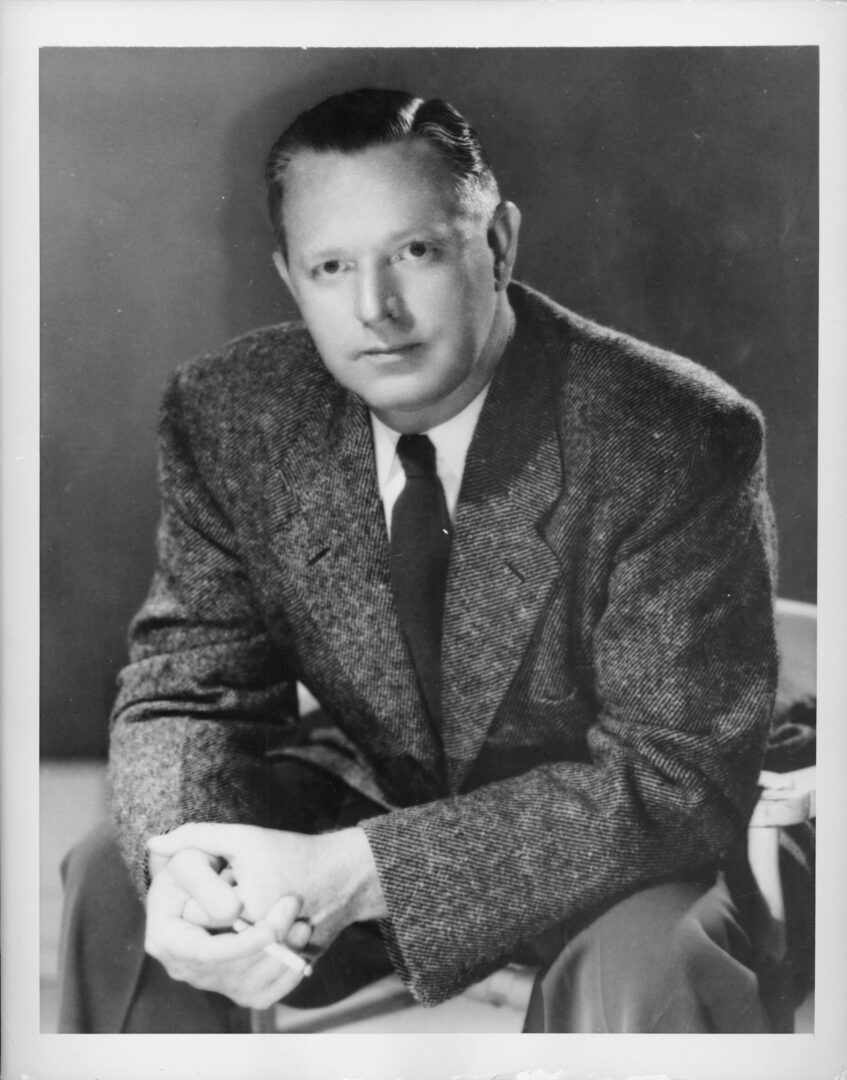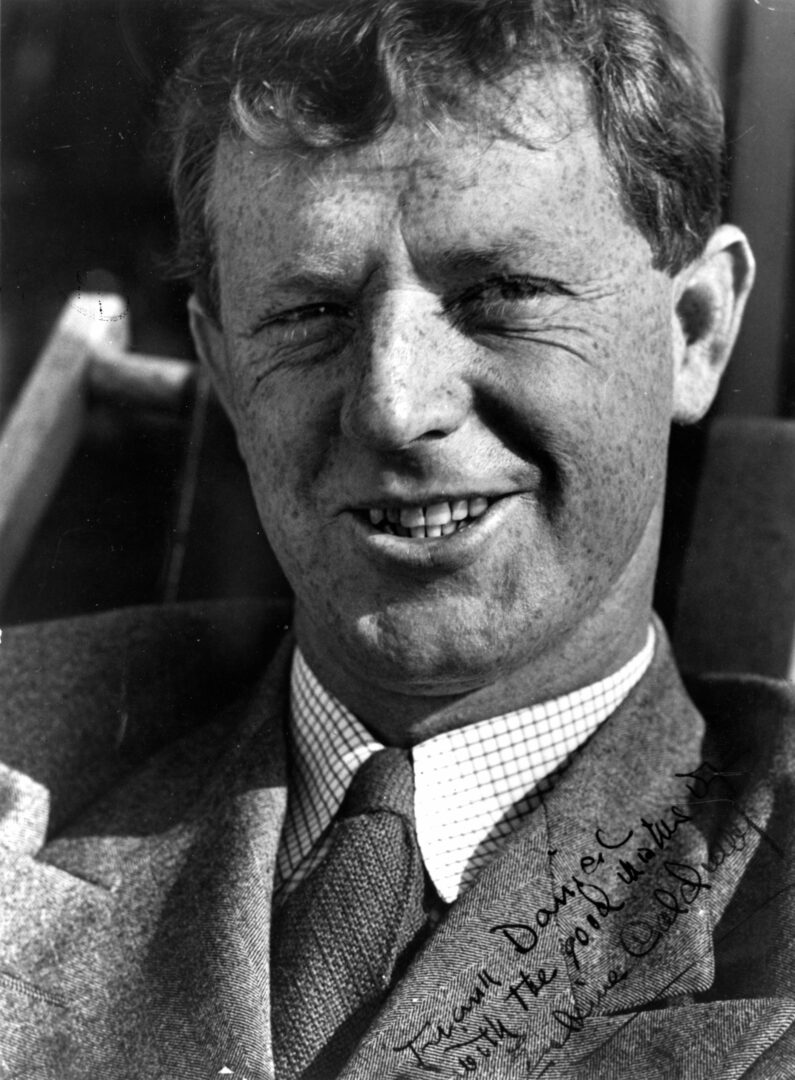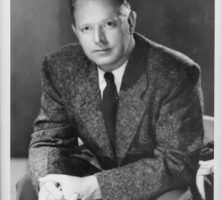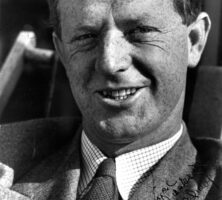Over the course of a long career, Erskine Caldwell wrote twelve books of nonfiction, twenty-five novels, and nearly 150 short stories. He was intent on depicting life among the lowly in Georgia and the rest of the South, and his concern for the less fortunate—poor whites and Blacks—shines in his great novels and short stories of the 1930s. This concern also permeates the strongest writing of his later years, his nonfiction works of the 1960s.
Early Life and Education
Born December 17, 1903, in Coweta County, Caldwell was the only child of Caroline “Carrie” Bell, a schoolteacher, and Ira Sylvester Caldwell, a minister in the Associate Reformed Presbyterian (A.R.P.) Church. Ira’s work led the family to move frequently. By the time Erskine was fifteen, he and his parents had lived in Georgia, Florida, the Carolinas, Virginia, and Tennessee. In the summer of 1919 they moved back to Georgia and settled in Wrens, a small town in Jefferson County about thirty miles south of Augusta. His parents lived there until Ira’s death in 1944.

Courtesy of Hargrett Rare Book and Manuscript Library, University of Georgia Libraries.
Erskine was profoundly influenced by his father, a minister and social reformer in a deeply conservative denomination. As a teenager, Erskine helped Ira provide assistance to desperately poor people in east central Georgia. His experiences with his father shaped much of his writing.
Following high school, Caldwell attended Erskine College, an A.R.P. school in South Carolina, and the University of Virginia, among other institutions. He never received a degree, but at the University of Virginia a professor encouraged him to be a writer. Outside class, he met fellow student Helen Lannigan, whom he married early in 1925. During their thirteen-year marriage, they had three children: Erskine Jr., Dabney, and Janet.
Early Career
Caldwell broke into print as a student at the University of Virginia with an essay entitled “The Georgia Cracker” (1926), which contained many of the themes that he later treated in fiction: political demagoguery, racial injustice, depraved religion, cultural sterility, and social irresponsibility. Most of his early fiction was published in short magazines. In spite of their shoestring budgets and small circulations, these magazines exerted an important influence on American literature by encouraging experimentation in form and content.
Two of Caldwell’s early stories caught the attention of a major figure in the literary establishment, Maxwell Perkins, senior editor at Charles Scribner’s Sons. Perkins read Caldwell’s work at the suggestion of F. Scott Fitzgerald. In 1931 Scribner’s published American Earth, Caldwell’s first significant book. Among the stories in the collection are “Joe Craddock’s Old Woman,” a poignant vignette of the hardships of farming; “Savannah River Payday,” a telling example of Caldwell’s ability to weave humor and horror; and “Saturday Afternoon,” a gut-wrenching story of a lynching. Introducing his work to a wider audience, American Earth ushered in an extraordinarily productive decade. By 1940 Caldwell had written, among other works, the novels Tobacco Road, God’s Little Acre, and Trouble in July; the short-story collection Kneel to the Rising Sun; and the documentary You Have Seen Their Faces.
Included by experts among the 100 most significant novels in English of the twentieth century, Tobacco Road (1932) describes the body-breaking and soul-numbing effects of poverty among Georgia’s tenant farmers during the Great Depression, a description leavened by Caldwell’s dark humor. God’s Little Acre (1933) portrays the abuse of southern industrial workers and the disintegration of a family, both of which are emphasized by a raw rendition of sex. Trouble in July (1940), a searing indictment of a brutal, racist society, depicts a lynching in the wake of mob hysteria aroused by white southern fears of interracial sex.
The short-story collection Kneel to the Rising Sun (1935) contains the writing of an author who was at the height of his powers. Caldwell’s mastery of the short-story form, together with his outrage over social injustice and his great talent, enabled him to write such unforgettable pieces as “The Growing Season,” which poignantly portrays a cotton farmer’s travail, and “Candy-Man Beechum” and “Kneel to the Rising Sun,” both burning condemnations of racism.
In addition to his fiction from the 1930s, Caldwell collaborated in the production of an overwhelmingly powerful work of nonfiction. In the summer of 1936 and again early in 1937 he traveled over the South with the noted photographer Margaret Bourke-White, interviewing people as she took their pictures. The result was You Have Seen Their Faces (1937), a combination of forceful writing and memorable photographs. It is a graphic depiction of life among the region’s country people during the Great Depression. Over the course of their travels, Caldwell and Bourke-White fell in love and were married after Caldwell’s wife divorced him.
The marriage lasted only three years. Both Caldwell and Bourke-White were more committed to their work than to their union, and they divorced in 1942. Thereafter, Caldwell married June Johnson, a college student half his age. During their rocky twelve-year marriage, they had one child, a son named Jay. Following his divorce from June, Caldwell married Virginia Fletcher. Their marriage lasted thirty years until his death and equaled the total time of his previous marriages.
Late Career
After the great work of the 1930s, Caldwell’s fiction declined significantly. The beginning of the decline coincided with the death of his father, who ha d been a steady and enthusiastic source of support and encouragement. The turmoil of his personal life also took its toll. Moreover, he believed that the optimal powers of a creative writer lasted only ten years.
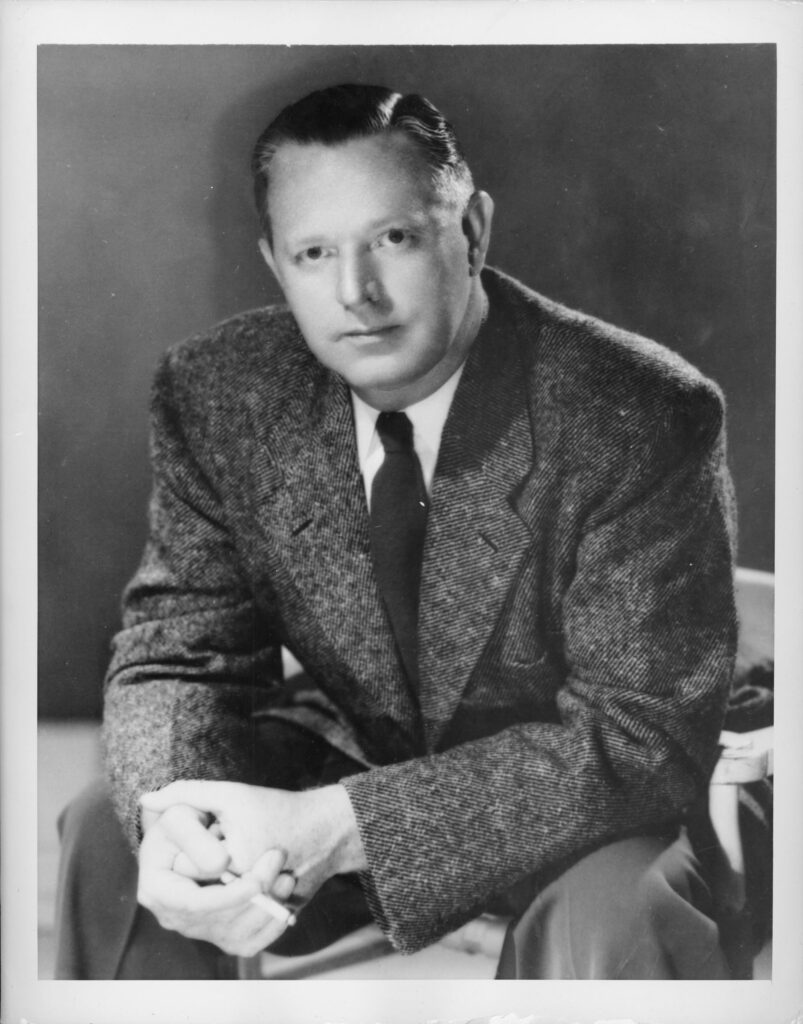
Courtesy of Hargrett Rare Book and Manuscript Library, University of Georgia Libraries.
Millions of readers in the late 1940s and the 1950s paid much more attention to Caldwell’s work of the 1930s than to his postwar writing. The paperback revolution in American publishing that began right after World War II (1941-45) exponentially increased the sales of Tobacco Road, God’s Little Acre, and others of Caldwell’s 1930s books by packaging those works in ways that obscured their full meaning. Their covers, featuring scantily clad, alluring young women, suggested that sex was the primary focus of the works. Caldwell made a good deal of money from his paperback publishers—at least $200,000 between 1945 and 1951 without writing a word—but his cooperation with them adversely affected his reputation within the literary establishment and helped ensure that his work would be neglected by scholars.
The best work of the latter part of Caldwell’s career is his nonfiction, especially his travel writing. Journeying over the South in the 1960s with his wife, Virginia, he wrote In Search of Bisco (1965) and Deep South (1968). The former deals with race and shows his disappointment with the white South’s opposition to integration. The latter, which explores religion, illustrates his ongoing frustration with white Christians who use their faith to oppose social reform—whether they are holy-rollers in the country or corporate executives in the city.
Legacy
Considering the great volume of Erskine Caldwell’s work, the quality might be expected to be uneven. Much of his early writing is among the best in American literature. That writing lodges in the reader’s memory. One does not forget the characters and circumstances described in Tobacco Road, God’s Little Acre, and many of the short stories.
Caldwell’s focus on the issues of class and race was one of the most intense of any other white southern writer of his generation. What distinguishes his best fiction dealing with class is his ability to evoke emotion while avoiding sentimentality. For example, if Jeeter Lester of Tobacco Road were only pitiable, then the reader, after feeling sorry for him, could forget him. But because his behavior is so outrageous, it is disturbing and unforgettable.
Notwithstanding the artistic power with which Caldwell invested his delineation of the effects of poverty, his anger and agony over the poison that racism injected into southern life called forth his best work. No rational person, not even a white southerner in the 1930s, could contend that the Black protagonists in such stories as “Saturday Afternoon,” “Candy-Man Beechum,” and “Kneel to the Rising Sun” deserved their terrible fate. Their self-respect and good habits, coupled with white jealousy, got them killed.
Caldwell’s harsh criticism of social injustice in his native region brought forth equally sharp criticism by some white southerners who accused him of being a Communist, a corrupter of morals, and a traitor to the South. At the same time, other southerners commended his artistic skill and his social conscience. Controversy over his writings stalked his career and extended beyond the grave.
Although Caldwell settled outside of Georgia shortly before he was twenty-five, he paid extended visits to his parents in Wrens for as long as they lived there. Later, he returned to Georgia and other southern states on numerous occasions. Though he lived much of his life outside the South, the region stayed on his mind and figured prominently in most of his writing. Nostalgia for his native Georgia found expression when he reached his sixties. As he wrote Governor Lester Maddox with an ironic twist in 1967, “I like to think that I am as much a Georgian as Brer Rabbit.” Nostalgia did not diminish the social concern, however. In his seventies, he asked an old friend at the Atlanta Journal to help with arrangements for a proposed volume that would update You Have Seen Their Faces.
A month before his death on April 11, 1987, Peachtree Publishers in Atlanta issued his final book, an autobiography entitled With All My Might. It is supremely fitting that his farewell was published in his native Georgia, a place that had supplied such rich material about the poor people whose lives he sought to improve.
In 2000 Caldwell was inducted as a charter member into the Georgia Writers Hall of Fame.





